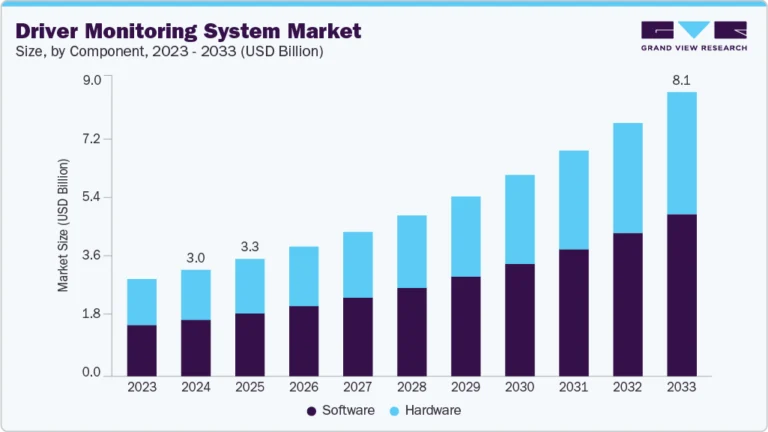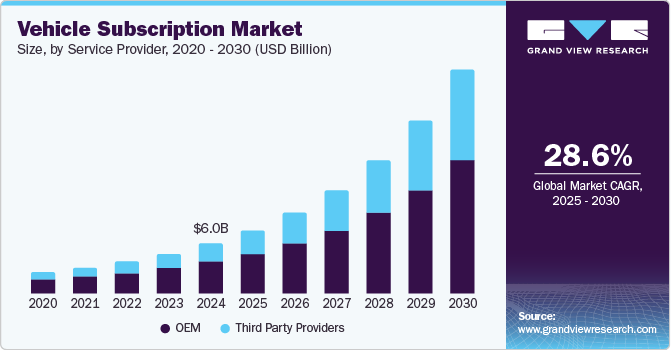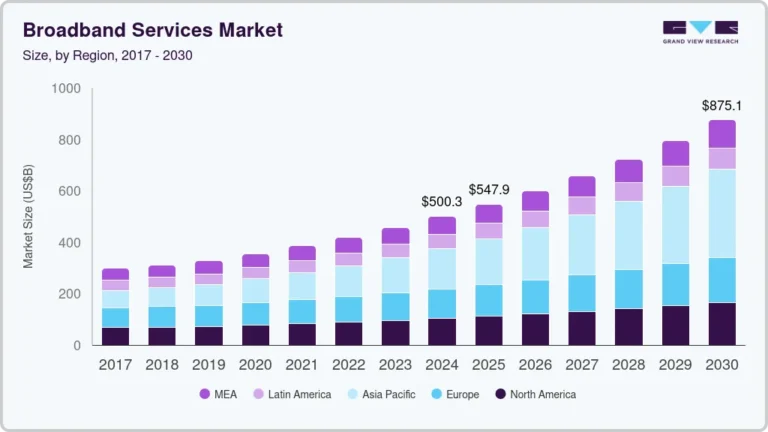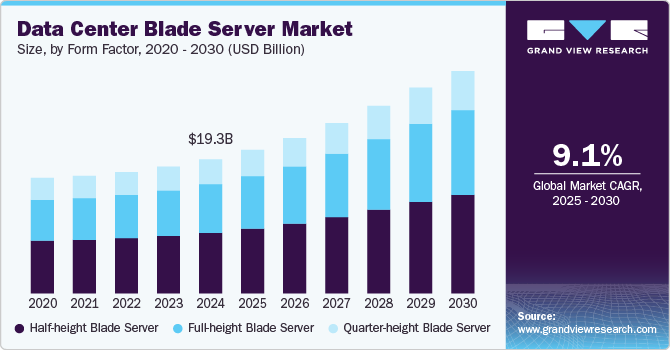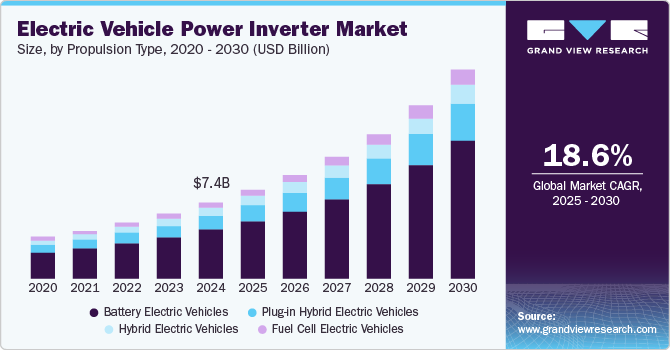Programmatic Advertising Market Size, Share & Trends Analysis growing at a CAGR of 22.8% from 2024 to 2030
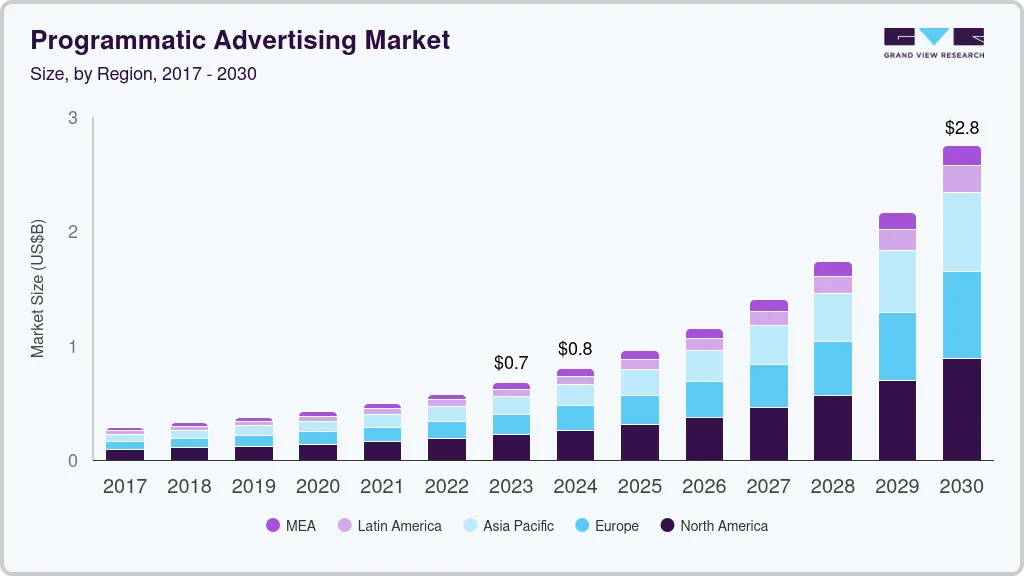
The global programmatic advertising market size was estimated at USD 678.37 billion in 2023 and is projected to reach USD 2,753.03 billion by 2030, growing at a CAGR of 22.8% from 2024 to 2030. Programmatic advertising has revolutionized the digital advertisement landscape, enabling marketers to reach their target audiences with greater precision and efficiency.
Key Market Trends & Insights
- The programmatic advertising market in North America held the largest global market share of 32.6% in 2023.
- The Asia Pacific programmatic advertising market is projected to grow at the fastest CAGR of 24.4% over the forecast period.
- Based on channel, the mobile & tablets segment dominated the market with a revenue share of 49.4% in 2023.
- Based on end use, the retail & consumer goods segment held the largest market share of 36.3% in 2023
- Based on Ad format, the video segment held the largest market share of 41.8% in 2023.
Market Size & Forecast
- 2023 Market Size: USD 678.37 Billion
- 2030 Projected Market Size: USD 2,753.03 Billion
- CAGR (2024-2030): 22.8%
- North America: Largest market in 2023
- Asia Pacific: Fastest growing market
Request a free sample copy or view report summary: https://www.grandviewresearch.com/industry-analysis/programmatic-advertising-market-report/request/rs1
Utilizing automated technology and algorithms, programmatic advertising streamlines the buying and selling of online ad space in real time, making the process more efficient and data-driven. Traditional ad buying involves manual negotiations, orders, and placements, which are time-consuming and prone to errors. Programmatic technology uses algorithms and machine learning to automate these tasks, enabling advertisers to purchase ad inventory in real time. This reduces the need for human intervention, speeds up campaign deployment, and minimizes errors, allowing advertisers to focus on strategy and creative aspects.
Programmatic advertising extends beyond traditional desktop and mobile platforms to include various digital environments, such as connected TV (CTV), digital out-of-home (DOOH), and audio platforms like podcasts and streaming services. This cross-platform capability ensures that advertisers can reach their target audience across different devices and channels. For example, a user who sees an ad on their mobile device might later encounter a related ad on their smart TV or while listening to a podcast, reinforcing brand messaging and improving brand recall.
Technological advancements play a crucial role in the evolution and effectiveness of programmatic advertising. The integration of various technologies has streamlined operations, enhanced targeting precision, and improved overall campaign outcomes. Key technologies driving this evolution include artificial intelligence (AI), machine learning, big data analytics, real-time bidding (RTB), and blockchain. AI and ML are at the core of programmatic advertising, enabling more intelligent and efficient ad-buying processes. These technologies analyze extensive datasets to identify patterns and trends, which inform decision-making in real time. AI can forecast campaign performance, allowing advertisers to optimize bids and targeting strategies proactively. Moreover, machine learning algorithms personalize ad content based on individual user behavior and preferences, thereby increasing engagement and conversion rates.
Real-time bidding (RTB) is a fundamental component of programmatic advertising, enabling the purchase of ad space through automated, real-time auctions. This technology ensures that advertisers reach their desired audience at the optimal moment. RTB automates the ad buying process, reducing the need for manual negotiations and speeding up campaign deployment. In addition, big data analytics is essential for processing and analyzing the massive volumes of data generated by digital interactions. This data-driven approach allows for more accurate audience segmentation and targeting.

